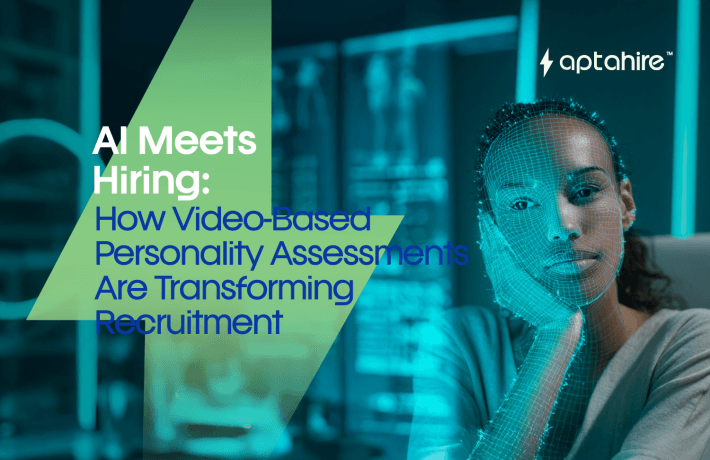How Are AI Tools Changing Talent Sourcing in Recruitment?

Artificial technology is bridging the gap between people and technology. Today, the modern workforce demands AI-based solutions for hassle-free hiring. Talent sourcing as a process is not restricted to job postings and finding the right talent. The role of HR recruiters is getting complex due to the challenge of the skills gap and frequent turnovers of employees. Smart recruitment technology can source multiple channels for hiring the best talent within the right time and cost.
LinkedIn has conducted a study on the future of recruiting. It highlights that 57% of recruiters use GenAI tools to write job descriptions, 45% spend time automating tasks, and 41% state that automation can improve overall productivity. Automation capabilities benefit candidate screening, sourcing, and scheduling to build the right team for the company. Looking at hiring trends, key technologies such as NLP, ML, GenAI, and RPA set the developed future of AI in recruitment.
So, how do these AI tools deliver exceptional talent experiences? Let’s find out in this comprehensive blog to understand the role and its benefits in depth.
What is the Process of Talent Sourcing
Talent sourcing is a pipeline used by hiring managers to identify the talent pool and to find the right fit. Every organization focuses on retaining the best talent to favor the company’s growth, culture, and skill requirements. So, talent sourcing focuses on criteria for skills, experiences, and career goals for shortlisted candidates.
Here is the process of talent sourcing to assist HR recruiters:
- Create an ideal candidate profile: Defining roles and preparing the candidate’s persona with soft skills, experience level, technical skills, and personality traits.
- Developing Talent Pipeline: This step includes current and future positions and an ideal roadmap to exceed capacity to learn and grow faster.
- Writing Job Overview: After researching what criteria are followed to hire the talent, outline the job description with the required skills and experiences.
- Filtering Categories: Use auto-filter to target the right keyword and eliminate CVs from the system if they fail to match pre-defined criteria. Some examples of these filters can be job type, work-ex, salary range, etc.
- Interview Setup and Engagement: Prepare interview questions and screening process, and use the platform to increase engagement with post-interview follow-ups.
- Open and Inclusive Sourcing: Experimenting doesn’t work for hiring! Companies can directly use job postings or events and consider sponsoring education events, campus drives, career fairs, and social media outreach.
How AI is Solving Talent Sourcing Obstacles
It would be simple for HR recruiters to shortlist the profiles of ten applicants, but what if the total exceeds 1000? AI tools, such as applicant matching software, may automate repetitive operations and manage talent while providing recruiters with quick and reliable findings.
Let’s examine how AI talent sourcing can help eliminate the obstacles in the recruitment system:
Managing High Volume Data
The future of AI in recruitment greatly depends upon data and analytics. It is implemented during candidate screening. Recruiters are flooded with plenty of options during talent sourcing, which leads to complexity. Implementing AI in the talent acquisition process with applicant tracking tools or HRIS systems improves data quality and derives accurate insights. HR managers can further utilize candidate data to identify trends and patterns following predictive analysis.
Solving Candidate Backout
Managing resumes, setting up interviews, and then the candidate disappears at the last minute. Isn’t it frustrating? Recruitment portals send out automated reminders and notifications. By using Aptahire’s AI-powered system, you can send automated reminders that result in lower candidates’ no-shows by 80%. Thus, instead of manually following up with applicants, the hiring team can devote time to focus on other tasks first.
Delay for Hiring Decision
The majority of applicants worry about wasting their time and effort when recruiters respond slowly. It could take weeks to select the best talent because of the repetitive approach. Hiring automation, however, can shorten the hiring cycle and share immediate responses to candidates for acceptance or rejection. You can use Aptahire’s scheduled features for candidate automated reports if you struggle to assess an applicant’s strengths and weaknesses.
Responding Prompt Inquiries
Recruiters can answer questions from candidates about job details at any stage of the talent-sourcing process. Conversational chatbots encourage candidates to interact frequently. Besides engagement, it can benefit from increased visibility and website traffic. You can employ Aptahire‘s automatic transcribing solution, nevertheless, as these features help to guide for accurate prompts and inputs.
High Setup Cost
The majority of jobs require one or two skill tests, such as reasoning and aptitude. Tests are conducted in costly setups of service centers. However, using trackers, screen-sharing tools, and a virtual setup can be cost-effective alternatives. Unconscious biases will be eliminated by using a camera and a speaker to monitor sessions. You can rely on Aptahire, a reputable platform that shares skill assessment metrics for HR recruiters.
One-stop Solutions
Recruiters often depend on manual hiring. By integrating APIs, smart hiring technology can place all solutions in one place. Recruiters can get all the required features to automate their hiring process under this AI software.
Also Read: How to Prevent Candidates from Ghosting!
Best Tips to Implement Automation Into the Hiring Process
Recruiters are often confused about how to implement AI tech in their existing hiring process, as there are already boundless ways to integrate AI talent sourcing. Companies often consult with marketing hiring agencies to understand which digital recruiting advancements help. According to a survey by TestGorialla, 81% of organizations trusted skill-based hiring over resumes. So, how can companies make effective use of these tools to handle their recruitment? Here are suggested tips:
- You can share personalized messages using tools to update on status and increase candidate engagement.
- Recruiters can try auto-scheduling job postings for multiple platforms simultaneously.
- AI-generated one-way interviews can help with the initial level of candidate screening.
- Predictive Analytics can track recruitment patterns, turnover rates, and other related metrics.
- You can add an AI chatbot to career pages for voice assistance features and application status.
- Automation-driven HR audit tools can used for compliance checks and verifying applicants’ candidature.
- Follow automated ads for job postings by integrating analytical tools for extracting data.
- Adding a feature of candidate ranking for shortlisting with automated filters.
- Adopt real-time application tracking to follow up and send instant alerts and notifications.
- You can use these AI tools for referral programs promoting inclusive hiring.
Future Dynamics of AI-Driven Talent Management
AI tools for recruitment have redeveloped hiring practices with the following strategies: intent search, GenAI chatbots, or profile scoring. Several studies have shown that recruiters can spend hours on administration tasks, ending up losing talent due to delays in process and onboarding. Automation software can fasten the process of slow hiring through personalized, flexible, and scalable solutions. The organization aims to build the best talent team with diversity and inclusion, and investing in AI talent sourcing can boost productivity. Companies can make informed decisions with customized features and build a culturally fit talent recruitment process.
Want accurate, faster, and smart hiring decisions? Count on Aptahire to explore AI-driven features, visual data presentation, and comparison tools for analysis.



